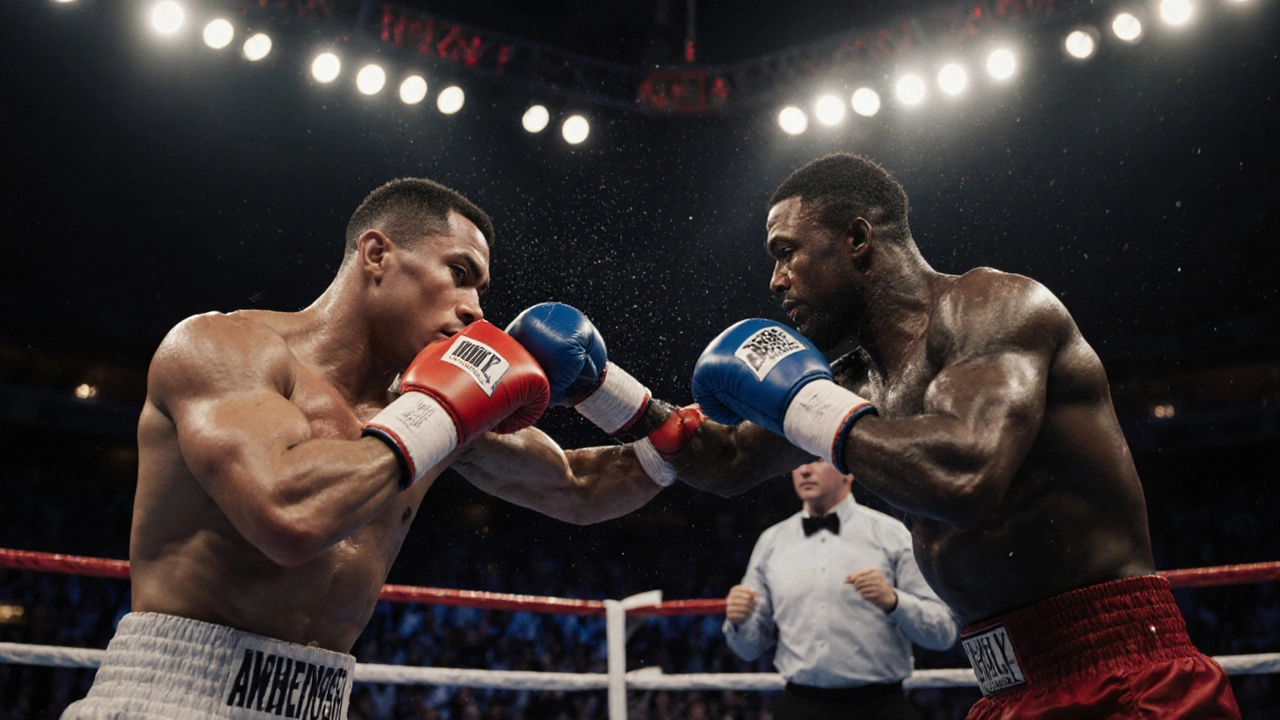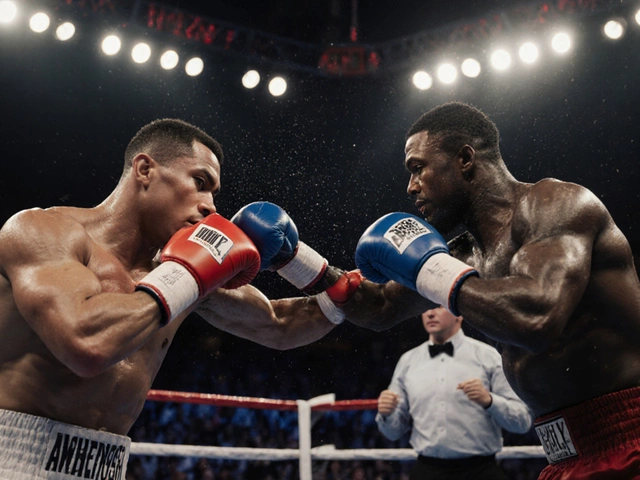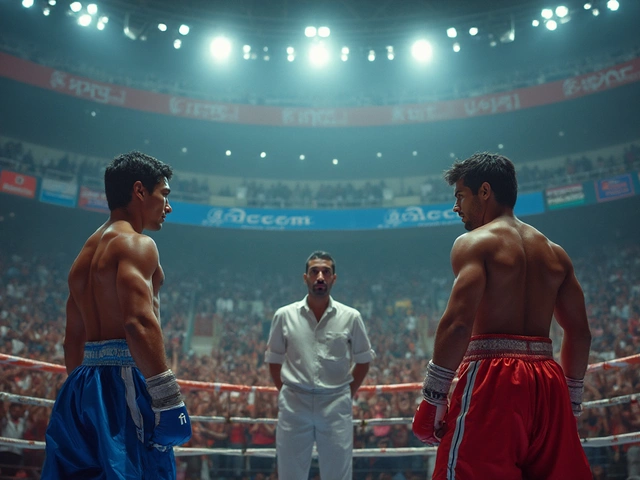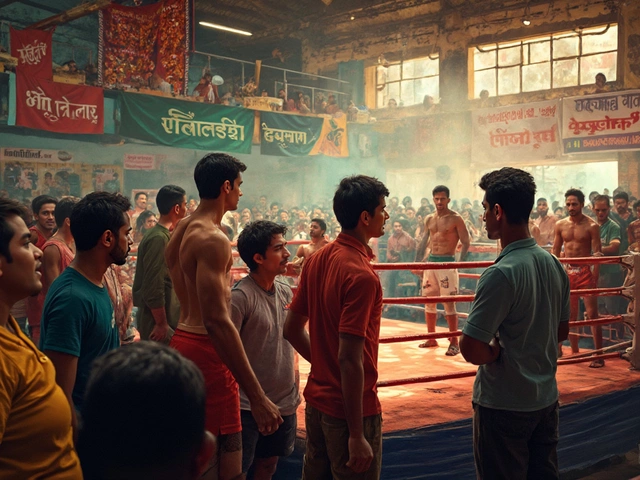Boxing Match Duration Calculator
Calculate Your Boxing Match Duration
Total Fight Time
Your fight will last
A boxing match isn’t just two people punching each other. It’s a structured, highly regulated sport with deep traditions, strict rules, and a clear objective: to outscore or outlast your opponent. If you’ve ever watched a fight on TV and wondered why the fighters don’t just keep swinging until one falls, you’re not alone. Understanding what a boxing match really is starts with breaking down its parts - the ring, the rounds, the scoring, and the safety measures that keep it from becoming chaos.
The Boxing Ring and Its Rules
A boxing match takes place in a square ring, usually 16 to 20 feet across, surrounded by four ropes. The ring floor is covered with a layer of canvas over padding to absorb impact. Fighters enter the ring wearing gloves (typically 8 to 10 ounces in professional bouts), hand wraps, and a mouthguard. They’re not allowed to hit below the belt, behind the head, or with the elbow. No headbutts, no biting, no holding and hitting - these aren’t just bad manners, they’re fouls that can lead to point deductions or disqualification.
Each bout is overseen by a referee who stands in the ring. The referee enforces the rules, stops the fight if a fighter is in danger, and counts knockdowns. If a fighter goes down, the referee starts a ten-second count. If the fighter can’t get up before the count ends, it’s a knockout - or KO. If the fighter gets up but looks too hurt to continue, the referee can stop the fight anyway - that’s called a technical knockout, or TKO.
How Rounds Work
Professional boxing matches are divided into rounds. Each round lasts three minutes, with one minute of rest between them. The number of rounds depends on the level of the fighters. Championship fights usually go 12 rounds. Lower-level bouts might be 4, 6, or 8 rounds. Amateur boxing, like in the Olympics, uses three rounds of three minutes each.
Before each match, the fighters and their teams agree on the number of rounds. This isn’t random - it’s based on experience, safety, and the event’s rules. Fighters don’t just go all-out from the first bell. They pace themselves. A smart boxer knows that winning the later rounds matters just as much as the early ones.
How Winners Are Decided
There are three ways a boxing match can end: knockout, technical knockout, or decision.
A knockout happens when one fighter is knocked down and can’t rise before the referee counts to ten. A technical knockout occurs when the referee, the fighter’s corner, or a ringside doctor decides the fighter can’t safely continue - even if they’re still standing.
If the fight goes the full distance, the winner is decided by judges. There are three judges sitting around the ring, each scoring every round independently. They use the 10-point must system: the winner of the round gets 10 points, the loser gets 9 or fewer. If a fighter is knocked down, they usually lose a point for that round. So if someone wins a round cleanly, they get 10-9. If they knock their opponent down once, it might be 10-8. If the round is even, it’s 10-10 - rare, but it happens.
At the end of the fight, the three judges add up their scores. The fighter with the most total points wins by unanimous decision (all three judges agree), split decision (two for one fighter, one for the other), or majority decision (two judges pick the same winner, one calls it a draw). If all three judges score it even, it’s a draw.
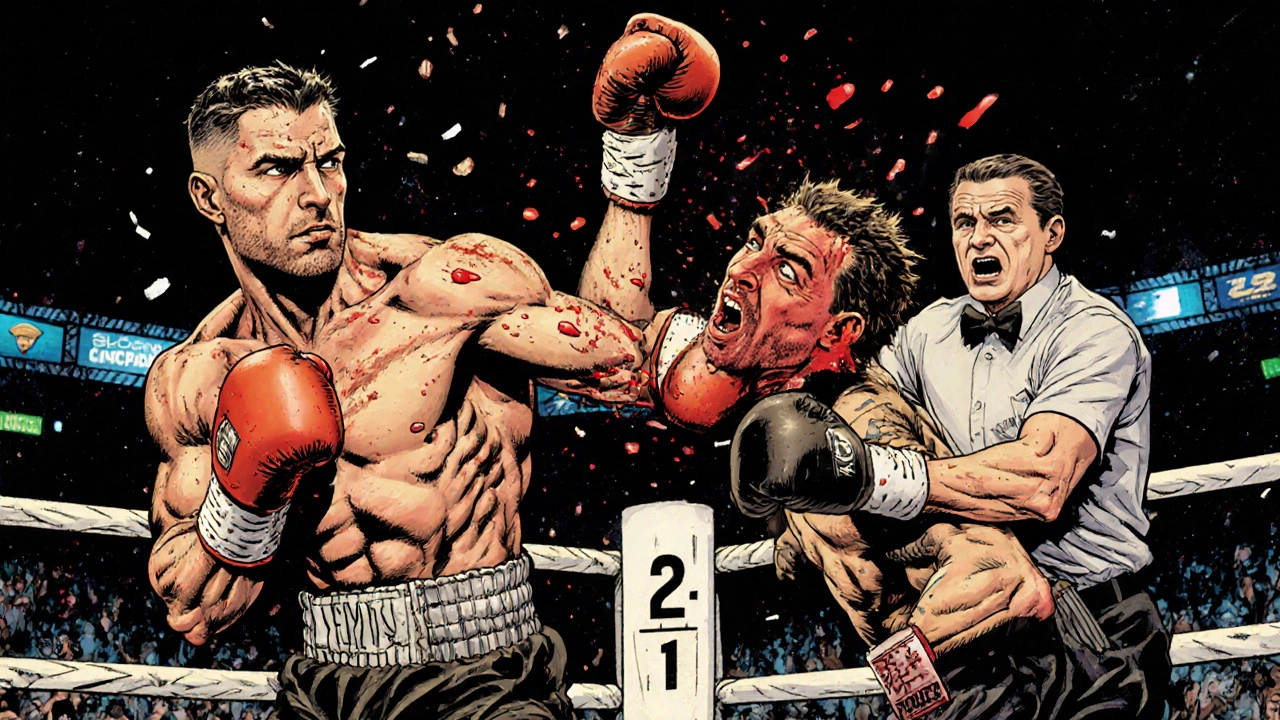
What Counts as a Legal Punch?
Not every punch you see in a movie is legal in the ring. Only punches thrown with the knuckle part of the glove, to the front or side of the head or body above the belt, count. Punches to the back of the head, the kidneys, or the spine are illegal. You can’t throw a punch while holding onto the ropes. You can’t hit after the bell. And you can’t hit someone while they’re down.
Boxers train for years to land clean, powerful shots without fouling. That’s why you see fighters slipping, blocking, and moving so much - they’re trying to land scoring punches while avoiding punishment. A good boxer doesn’t just throw punches; they throw the right punches at the right time.
Why Boxing Matches Are So Strategic
Many people think boxing is about brute strength. But the best fighters are thinkers. They study their opponents’ habits - how they hold their hands, where they look before throwing a punch, how they recover after a miss. A veteran boxer might let their opponent throw a few wild swings early, then counter with a sharp jab or a hook when the other fighter is off-balance.
Footwork matters as much as fists. Moving sideways, circling, and controlling distance can make a smaller fighter look bigger. A fighter who controls the center of the ring often controls the fight. That’s why you see trainers yelling from the corner between rounds: “Move your feet!” “Keep your hands up!” “Don’t chase him!”
Even the way a fighter breathes matters. Holding your breath after a punch makes you tired faster. Breathing steadily helps you stay calm, recover between exchanges, and last longer into the later rounds.
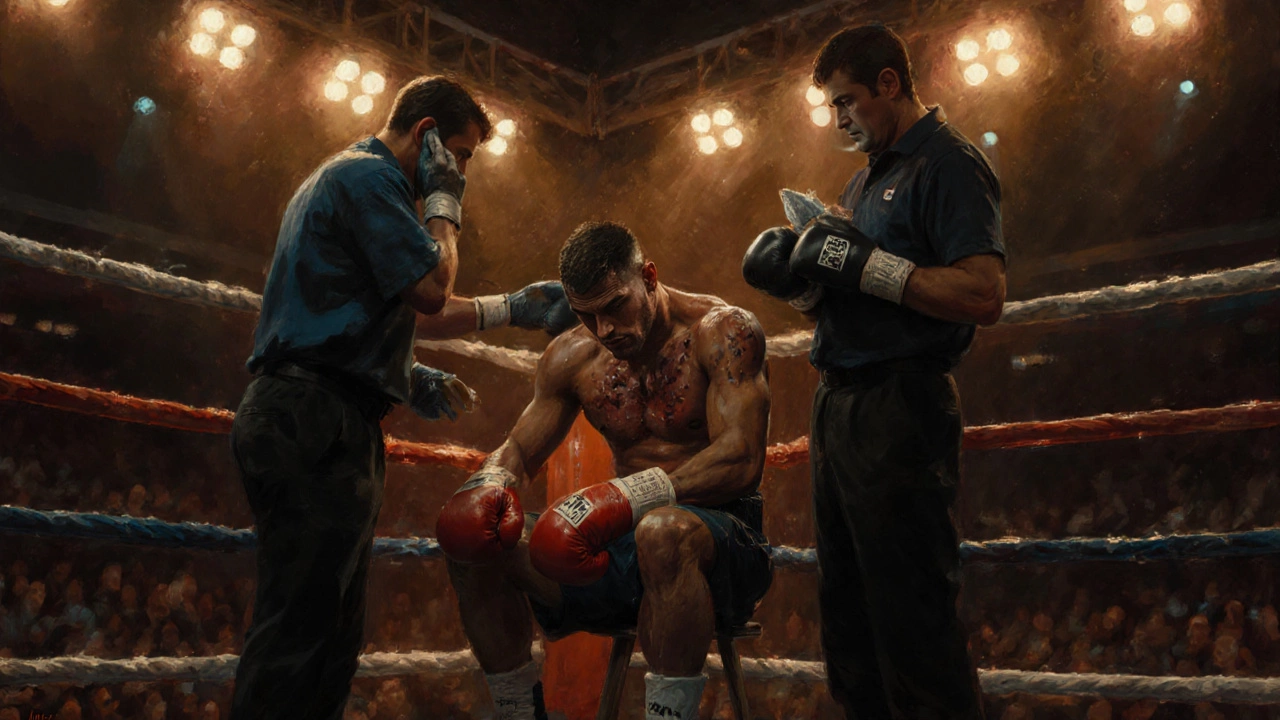
The Role of the Corner Team
Between rounds, fighters have one minute to rest and get advice. That’s when their corner team - usually a head trainer and one or two assistants - jump in. They wipe sweat, adjust the mouthguard, ice swollen areas, and give quick tactical advice. A good corner can turn a losing fight around in 60 seconds.
They might tell a fighter to switch stances, target the body more, or stop trying to land a big knockout. Sometimes, they’ll tell a fighter to just survive the next round - if the score is close, it’s better to live to fight another day. In extreme cases, a corner will throw in the towel to protect their fighter from serious injury. That’s not quitting - it’s responsibility.
Amateur vs. Professional Boxing
There’s a big difference between amateur and pro boxing. In amateur bouts - like those in the Olympics or national tournaments - fighters wear headgear, and the scoring is more focused on clean, light touches. Judges use electronic systems to register punches. The goal is to score points, not to knock someone out.
Professional boxing removes the headgear and allows heavier gloves. The focus shifts to power, damage, and ring control. Knockouts are more common, and the scoring rewards aggression and effective striking more than in amateur rules.
That’s why you’ll see fighters transition from amateur to pro - they’re ready for the physical and mental demands of a longer, harder fight.
What Happens After the Bell Rings
After the final bell, fighters shake hands - even if they’ve been trading blows for 36 minutes. It’s tradition. It’s respect. The winner is announced, but the real test comes after the fight. Medical staff check both fighters for signs of concussion, swelling, or injury. In professional boxing, fighters must undergo a neurological exam within 72 hours. Some states require a CT scan if there’s been a knockdown.
Recovery takes days, sometimes weeks. Ice, hydration, rest, and sometimes physical therapy - it’s not just about winning. It’s about walking away healthy.
A boxing match isn’t about violence. It’s about discipline, timing, and control. It’s about pushing your body and mind to the edge - and knowing when to pull back. That’s what makes it more than just a fight. It’s a test of character.
How long does a typical boxing match last?
A professional boxing match can last up to 36 minutes - 12 rounds of 3 minutes each, with 1-minute breaks between rounds. Amateur bouts are shorter, usually 3 rounds. Championship fights are always 12 rounds, while undercard fights might be 4, 6, or 8 rounds.
Can a boxing match end before all rounds are completed?
Yes. A match can end early by knockout (KO), technical knockout (TKO), disqualification, or if a fighter’s corner throws in the towel. Judges or doctors can also stop the fight if a fighter is taking too much damage and can’t defend themselves safely.
What do boxing judges look for when scoring a round?
Judges score based on clean, effective punches, ring control, defense, and aggression. It’s not about who throws the most punches - it’s about who lands the most telling ones. A fighter who avoids damage and lands precise shots often wins the round over someone who swings wildly but misses often.
Why do boxers wear gloves if the goal is to hurt the opponent?
Gloves protect the hands from breaking and reduce the risk of cuts and serious head trauma. While they might seem like they soften punches, they actually allow fighters to throw harder, more frequent punches without injuring themselves. The gloves also make it harder to land accidental eye pokes or illegal blows.
Is boxing dangerous?
Yes, boxing carries risks - especially to the brain. Repeated head trauma can lead to long-term conditions like chronic traumatic encephalopathy (CTE). That’s why fighters undergo medical checks before and after fights, and why regulations around headshots, round limits, and rest periods exist. Proper training, conditioning, and respect for the sport reduce risks significantly.
